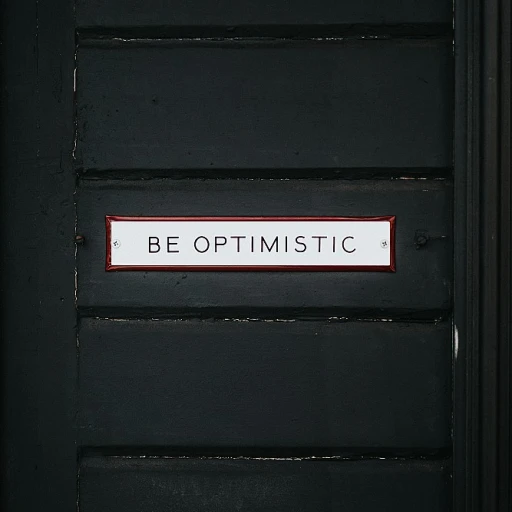
Defining a Hostile Work Environment
Identifying the Core Aspects of a Hostile Work Environment
Understanding what makes a workplace hostile is essential in ensuring a healthy and productive work setting. At its core, a hostile work environment is characterized by unwelcome conduct that significantly affects an employee's ability to perform their job. This unwelcome conduct often involves behavior that is offensive, severe, or pervasive enough to create an intimidating or abusive atmosphere. Typically, such environments include elements of harassment, sexual harassment, or discrimination based on protected characteristics like race, gender, age, or national origin. These issues are often governed by employment laws, including the EEOC guidelines, designed to shield employees against such conduct. The legal framework underpins the responsibilities of employers to foster an inclusive environment and protect by safeguarding those under their employment from experiencing harassment or discrimination. Many employees may find it challenging to prove hostile work environments due to the complexity and sensitivity of workplace interactions. It's essential for businesses to establish clear anti-harassment policies and educate their workforce about acceptable workplace behavior to mitigate potential hostility. For more insights on how companies are evolving in the age of AI to address these concerns, explore the role of a Chief People Officer in promoting a healthy work environment.The Role of AI in Identifying Hostile Work Environments
Leveraging AI for Detection and Prevention
In the modern workplace, pinpointing signs of a hostile work environment, which could include harassment, discrimination, or any offensive behavior, is crucial. AI technologies are instrumental in identifying patterns that may indicate an environment hostile to employees. These advanced systems can assess large datasets, uncovering instances of unwelcome conduct based on protected characteristics such as race, gender, or national origin. By doing so, AI plays a pivotal role in the proactive identification of potential hostile environments.
AI-driven tools can analyze communication channels and identify potentially harmful keywords or phrases, which might signal the existence of a hostile work environment. For instance, natural language processing (NLP) algorithms can scan emails, chat logs, and social media interactions for terms that hint at workplace harassment or other forms of misconduct. These insights can be shared with HR professionals, equipping them with the knowledge necessary to take timely and informed action.
Furthermore, AI models can assess employee feedback and surveys to detect red flags within the workplace. By aggregating and analyzing data points, AI can assist in recognizing clusters of negative sentiment or recurring themes of hostile behavior. This data-driven approach aids organizations in handling grievances effectively and making the workplace safer and more inclusive for everyone. For more on AI’s influence in specific employment sectors, consider exploring how AI is transforming health care security practices.
The capabilities of AI technologies extend to enhancing legal compliance as well. Through diligent monitoring and analysis, AI can assist employers in meeting EEOC guidelines and adhering to employment law, ultimately reducing the risk of litigation involving workplace harassment or discrimination.
AI-Driven Solutions for Mitigating Hostility
Leveraging AI to Mitigate Hostility in the Workplace
Artificial intelligence is shaping up as a pivotal instrument in mitigating the environment hostile issues that often plague workplaces. By employing advanced algorithms and machine learning models, AI systems can proactively assist human resource teams in identifying unwelcome conduct before they escalate into a more severe hostile workplace scenario. AI technology can analyze vast amounts of data from various sources within a company. This includes evaluating employee feedback, monitoring communication channels, and assessing behavior patterns to detect signs of harassment workplace threats or signals indicative of a hostile environment. With AI’s analytical capabilities, identifying patterns of sexual harassment, discrimination based on protected characteristics like national origin, or other forms of workplace harassment becomes more efficient and less biased. Moreover, AI-powered solutions can advise employers on appropriate responses and interventions. They can provide recommendations on crafting effective anti-harassment policies and gauge compliance with employment law standards, such as those set by the EEOC, thereby reducing employment-related legal risks for an organization. The implementation of AI in this context further extends to improving employee engagement. By facilitating a fair and respectful work environment, AI can enhance the overall morale of employees, making them feel valued and protected, which in turn ensures a healthier organizational culture. AI solutions are not a standalone fix, though. They need to complement existing human-centered HR practices and collaborate with human judgment to truly create a conducive working environment. To learn more about how artificial intelligence is shaping HR practices, check out this informative article for an in-depth understanding.Challenges and Limitations of AI in Addressing Workplace Hostility
Challenges and Limitations in Using AI to Address Workplace Hostility
While AI offers promising tools for identifying and reducing hostile work environments, it is not without its challenges and limitations. Employers, employees, and HR professionals need to understand these constraints to effectively leverage AI in tackling workplace hostility and harassment.
Firstly, AI systems are only as good as the data they are trained on. Biases in data can lead to outcomes that inadvertently reinforce existing workplace discrimination or harassment. If datasets lack diversity or fail to include a wide range of protected characteristics such as race, gender, or sexual orientation, the AI may produce ineffective or even harmful results when identifying hostile behavior.
Moreover, AI systems may struggle with interpreting the nuances of human behavior and language. Offensive or unwelcome conduct might be subtle or contextually based, making it challenging for AI to detect it as problematic without the risk of false positives or negatives. This complexity necessitates a robust framework where AI solutions are continuously monitored and adjusted according to expert human feedback.
Another significant limitation is the legal and ethical implications of using AI in workplace environments. The use of AI to monitor or analyze employee behavior must comply with employment law and respect privacy rights, ensuring that anti harassment measures do not infringe upon personal privacy or create a sense of continuous surveillance for employees.
The cost and resource demand of implementing AI solutions may also pose a barrier, particularly for smaller organizations. Employers must weigh the benefits of AI with the investment required to integrate and maintain these systems in their workplace strategies.
Finally, it's crucial to remember that AI is not a standalone solution. It should complement human intuition and involvement in the workplace. Ultimately, addressing workplace hostility requires a concerted effort from both technology and human resource professionals to foster a more inclusive and respectful work environment.
Case Studies: AI Interventions in Real Workplaces
Real-World Applications of AI in Handling Hostile Workplaces
The use of artificial intelligence to counteract workplace hostility and harassment is no longer a futuristic concept, but a present-day reality. Companies across various sectors are already employing AI-driven tools to detect unwelcome conduct and foster a safer, more inclusive work environment. Understanding how these AI interventions work can provide valuable insights for organizations struggling to navigate the complexities of workplace harassment.
Detecting Patterns of Hostility
AI technologies are adept at identifying patterns of behavior that may indicate a hostile workplace. For instance, several organizations have adopted AI systems capable of analyzing email and communication data to uncover signs of harassment and offensive behavior—a technique that helps in recognizing early indicators of a hostile environment before major issues arise. These systems emphasize anonymity and privacy while ensuring that flagged behavior is addressed appropriately, aligning with employment law requirements and protecting employees' legal rights.
Enhancing Reporting and Tracking Systems
One key area where AI demonstrates its potential is in enhancing the reporting and tracking of harassment incidents. By employing machine learning algorithms, employers can more effectively monitor reported cases, track resolution progress, and identify potential recurrence of hostile conduct. AI systems can automate the aggregation of complaints and help human resources practitioners determine patterns based not only on frequency but on the underlying nuances of each case.
Implementing Proactive Measures
Beyond solely identifying hostile environments, AI is employed in devising proactive strategies to deter harassment and discrimination. For example, AI-powered training programs can simulate real-life scenarios of workplace harassment, allowing employees and employers alike to better understand and address issues of sexual harassment and hostile behavior. By promoting awareness of anti-harassment policies and the consequences of breaching these guidelines, AI can contribute to a more respectful and accommodating employment environment.
Addressing Challenges with Sensitivity
While AI brings significant advantages in recognizing and addressing a hostile work environment, its implementation is not without challenges. It is crucial to configure AI systems to differentiate between unwelcome conduct and legal, protected workplace discussions. Misinterpretations could lead to over-reporting or unwarranted disciplinary actions, hence why human oversight remains essential. Furthermore, AI must be continuously updated to reflect evolving employment laws and ensure fairness in protecting the rights of employees against discrimination and harassment.
The journey to successfully integrate AI in tackling workplace hostility is far from complete. However, ongoing case studies showcase AI's transformative potential in building healthier and more inclusive work environments.












